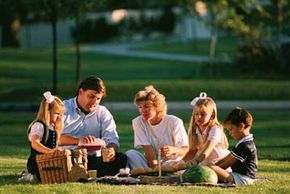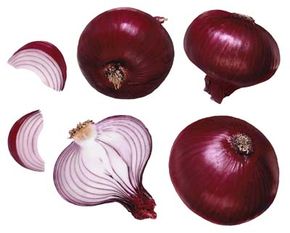Here are some simple home remedies for minimizing a sting's pain quickly and easily. Be sure to keep an eye out for signs of a more severe reaction so that medical help can be sought immediately if necessary.
Activated charcoal. This can help draw out toxins that cause inflammation, swelling, and itching. To make a paste, open up 2 to 3 capsules of charcoal, mix with enough water to make a paste, and apply to the affected area. After 30 minutes, wipe the paste off with a wet cloth.
Ice. Ice or any cold compress does triple first-aid duty by diminishing the itch, reducing inflammation and swelling, and easing the pain of bites/stings. Put crushed ice into a plastic bag (or use a bag of frozen vegetables), wrap it in a towel,
Vinegar. No matter whether it's the white or the apple cider variety, vinegar turns insect sting pain into a thing of the past. Pour it on the affected site, or mix it with baking soda to make a paste that you can apply to the bitten area. Out of vinegar? Try applying straight lemon juice instead.
Garlic. You might not get kissed, but you might not get bitten either if you eat your onions and garlic regularly. Just like humans, stinging insects are attracted or repulsed by odors in their environment. Perhaps it is to your advantage not to smell so sweet. Some people believe that by eating pungent foods such as onions and garlic, the smell of your sweat changes, sending out a signal to insects that you stink. And you do. While this theory hasn't been tested, it can't hurt to add an extra onion on your burger or an extra garlic clove to your salad dressing. (The effect only works with raw garlic or onions so don't cook them -- cooking not only destroys the stink, it also changes the active ingredients.) Just remember to have some mouthwash or gum on hand if you plan to talk to others!
Knife. Bees and yellow jackets leave evidence behind when they strike: their barbed stinger. It's not a pleasant sight to see this pulsating barb puncturing the skin and releasing venom. Carefully and gently remove the stinger by scraping it off with a knife blade. Don't reach for the tweezers or tongs. Squeezing and grabbing the stinger causes more venom to be pumped into the victim. After removing the stinger, apply a topical antiseptic, such as alcohol or Betadine.
Soap. Some kitchen cures are right under your nose -- take plain old bar soap, for instance. Besides keeping you squeaky clean, soap helps relieve the bite of the ubiquitous mosquito. Wet the skin and gently rub on soap. Rinse well. Be sure to use only nondeodorized, nonperfumed soap. Fancy, smelly soaps may irritate the bite area.
Bees, wasps, hornets -- be gone! Use the home remedies in this article to avoid and treat bites and stings, and focus your time and energy instead on summertime fun.
For more information about insect bites and allergies, and ways to treat them, try the following links:
ABOUT THE AUTHORS:
Timothy Gower is a freelance writer and editor whose work has appeared in many publications, including Reader's Digest, Prevention, Men's Health, Better Homes and Gardens, The New York Times, and The Los Angeles Times. The author of four books, Gower is also a contributing editor for Health magazine.
Alice Lesch Kelly is a health writer based in Boston. Her work has been published in magazines such as Shape, Fit Pregnancy, Woman's Day, Reader's Digest, Eating Well, and Health. She is the co-author of three books on women's health.
Linnea Lundgren has more than 12 years experience researching, writing, and editing for newspapers and magazines. She is the author of four books, including Living Well With Allergies.
Michele Price Mann is a freelance writer who has written for such publications as Weight Watchers and Southern Living magazines. Formerly assistant health and fitness editor at Cooking Light magazine, her professional passion is learning and writing about health.
ABOUT THE CONSULTANTS:
Ivan Oransky, M.D., is the deputy editor of The Scientist. He is author or co-author of four books, including The Common Symptom Answer Guide, and has written for publications including the Boston Globe, The Lancet, and USA Today. He holds appointments as a clinical assistant professor of medicine and as adjunct professor of journalism at New York University.
David J. Hufford, Ph.D., is university professor and chair of the Medical Humanities Department at Pennsylvania State University's College of Medicine. He also is a professor in the departments of Neural and Behavioral Sciences and Family and Community Medicine. Dr. Hufford serves on the editorial boards of several journals, including Alternative Therapies in Health & Medicine and Explore.
This information is solely for informational purposes. IT IS NOT INTENDED TO PROVIDE MEDICAL ADVICE. Neither the Editors of Consumer Guide (R), Publications International, Ltd., the author nor publisher take responsibility for any possible consequences from any treatment, procedure, exercise, dietary modification, action or application of medication which results from reading or following the information contained in this information. The publication of this information does not constitute the practice of medicine, and this information does not replace the advice of your physician or other health care provider. Before undertaking any course of treatment, the reader must seek the advice of their physician or other health care provider.
and apply to the site for 20 minutes. Do not, however, apply the ice or bag of frozen food directly to the skin -- you may do more damage than good!

